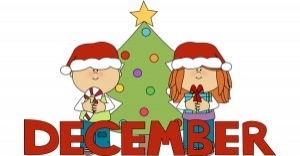

This template is to celebrate NAIDOC Week 2022 from 3-10 July 2022. It is an opportunity for all Australians to learn about First Nations cultures and histories and participate in celebrations of the oldest, continuous living cultures on earth.
A co-listening podcast for preschoolers is called Little Yarns. Little Yarns is all about the various languages, tales, and countries of Indigenous Australia and is a great listening resource in early learning services.
The following free workbooks are designed to allow the best opportunities to learn the Wiradjuri language and culture through games and other learning activities. Wiradjuri is one of many Aboriginal languages on the East Coast of Australia.
Goodstart Early Learning is now included as one of the 43 Australian organisations in the National Indigenous Employment Index, that represent indigenous employment. It is the only early learning provider, which includes a comprehensive snapshot of Indigenous employment representation processes and experiences.
Dharug, the first language of the Sydney Basin area, is among the other Aboriginal languages that are being taught to 16 NSW public preschools across the state.
The Healing Foundation’s Stolen Generations Resource Kit for Educators and Children has been created to educate young people about the Stolen Generations. It makes it easy for the community to start the conversation and inform discussions using facts, real examples and stories.
This template is for services to participate in the Sea Of Hearts challenge for National Reconciliation Week 2025.From the 27th of May, 2025, to the 3rd of June, we celebrate Reconciliation Week. Connecting the Dots Through Culture has developed this challenge.
From the 27th of May, 2022 to the 3rd of June, we celebrate Reconciliation Week, Connecting The Dots Through Culture has developed the Sea Of Hearts Challenge.
On Wednesday 25 May 2022 join ARACY for a webinar with guest speakers William Tilmouth and Jane Vadiveloo from the Children’s Ground to discuss their work in bringing Indigenous languages and practices to the forefront in their Early Childhood Care and Education programs.
On Tuesday, May 3, Educators are invited to a free webinar, hosted by Narragunnawali, that will unpack the 2022 National Reconciliation Week (NRW) theme, “Be Brave. Make Change.” The webinar will explore ways Educators incorporate reconciliation and share some practical ideas for learning about and celebrating the theme in early childhood services.
 The following lists cultural and special events that are taking place in December 2025. This should help you to plan and organise upcoming events and… Read More
The following lists cultural and special events that are taking place in December 2025. This should help you to plan and organise upcoming events and… Read More
 The following lists cultural and special events that are taking place from January to December 2026. This should help you plan and organise upcoming events… Read More
The following lists cultural and special events that are taking place from January to December 2026. This should help you plan and organise upcoming events… Read More
 Early childhood teachers across Victoria are sounding the alarm over new childcare reforms, warning that the changes are piling administrative burdens onto staff and eroding… Read More
Early childhood teachers across Victoria are sounding the alarm over new childcare reforms, warning that the changes are piling administrative burdens onto staff and eroding… Read More
 Explore the responsibilities, legal obligations, and best practices of the nominated supervisor ECEC with this three-part webinar series presented by Victoria McDowell and Meray Parsons… Read More
Explore the responsibilities, legal obligations, and best practices of the nominated supervisor ECEC with this three-part webinar series presented by Victoria McDowell and Meray Parsons… Read More
© 2009-2025 Aussie Childcare Network Pty Ltd. All Rights Reserved.

